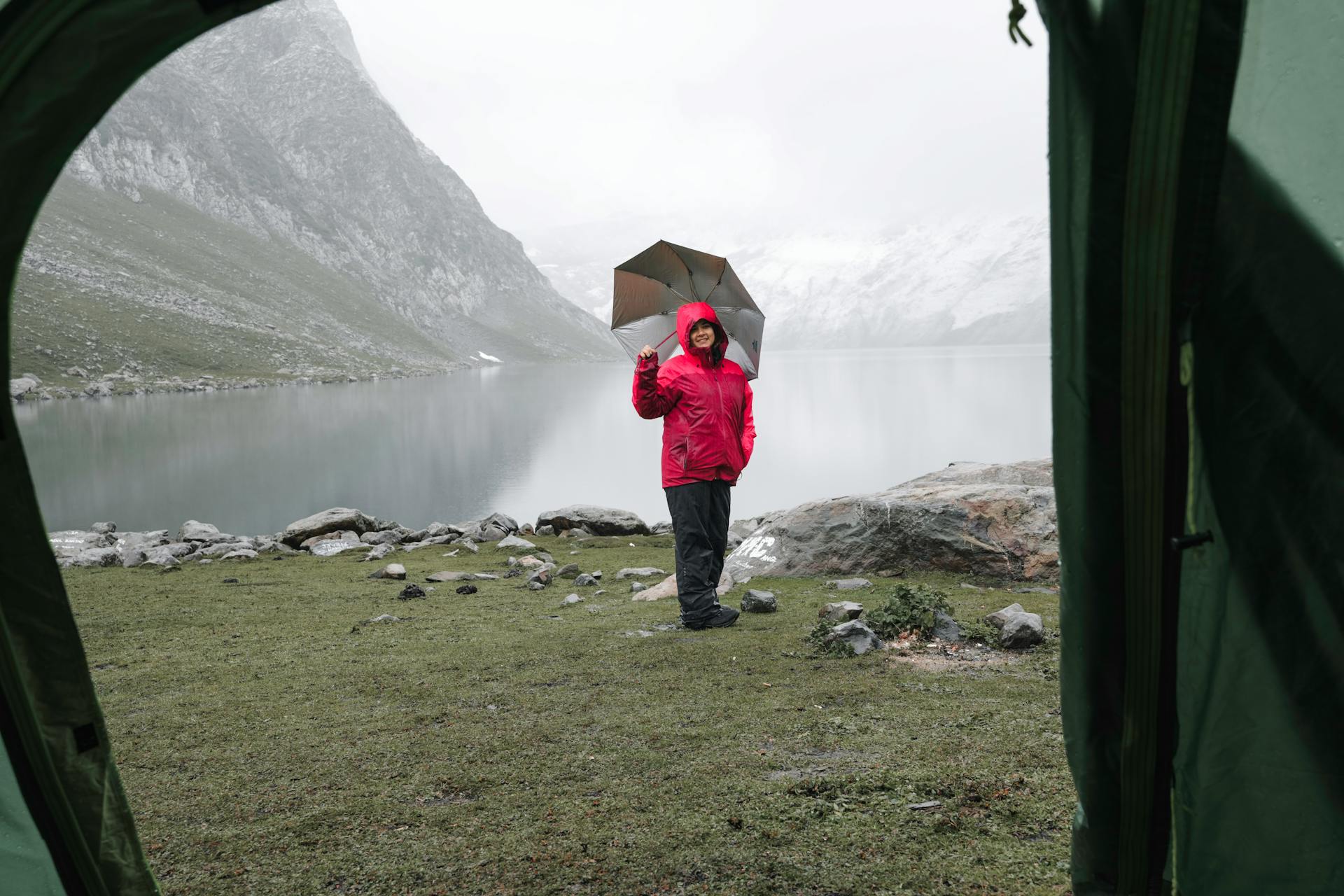Embrace Nature, Rain or Shine
Rain doesn’t have to dampen your camping adventure. With smart preparation and the right mindset, you can turn a soggy situation into a memorable journey. This comprehensive guide offers essential tips to help you stay dry, comfortable, and entertained during your rainy camping trips.
1. Choose the Right Campsite
The location of your campsite can make or break your experience in wet weather.
- Avoid Low-Lying Areas: These spots are prone to flooding during heavy rainfall.
- Seek Natural Shelter: Look for tree cover to provide some protection, but steer clear of trees with large, overhanging branches that may break.
- Check the Ground: Opt for firm, well-drained ground rather than soft, muddy terrain to keep your campsite secure.
- Facing Wind: Set up tents so that entry points face away from prevailing winds to reduce rain ingress.
Tips for Selecting the Best Campsite
- Scout Early: Arrive at your destination ahead of time to have your pick of suitable spots.
- Ground Testing: Press your foot firmly on the ground—if water pools, it’s not ideal.
- Elevation Matters: Even a slight incline can help drainage during rainfall.
2. Pack Weather-Ready Gear
Investing in the right equipment will set you up for success.
- Waterproof Tent: Ensure your tent is equipped with a waterproof rainfly and sealed seams.
- Ground Tarp: Place a tarp underneath your tent to prevent moisture from seeping through the bottom.
- Quality Rain Gear: Pack waterproof jackets, pants, and gaiters to keep yourself dry.
- Dry Bags: Use these for storing clothes, electronics, and essential gear.
- Extra Stakes and Guy Lines: Reinforce your tent to withstand heavy wind and rain.
- Footwear: Waterproof hiking boots with proper grip will keep your feet dry and reduce slips.
Tent Maintenance Tips
- Seam Sealing: Regularly apply seam sealer to maintain tent waterproofing.
- Ventilation: Keep vents open to minimize condensation inside the tent.
Recommended Gear Checklist
- Poncho or raincoat
- Waterproof gloves
- Insulated sleeping bags
- Portable solar chargers
3. Dress in Layers for Comfort
Layering your clothing helps regulate body temperature and keeps you comfortable.
- Base Layer: Wear moisture-wicking materials to keep sweat away from your skin.
- Insulating Layer: Choose fleece or synthetic fabrics that retain warmth even when wet.
- Outer Layer: A breathable, waterproof shell will shield you from rain while allowing moisture to escape.
- Accessories: Don’t forget waterproof gloves and hats to keep extremities warm.
Clothing Tips for Wet Weather
- Change Frequently: Swap out damp clothes to stay warm.
- Spare Socks: Always pack extra pairs—dry feet are key to comfort.
4. Set Up Camp Strategically
Small adjustments to your campsite setup can make a significant difference.
- Pitch on an Incline: Set up your tent on a slight slope to allow water to drain away.
- Create a Rain Shelter: Use tarps or canopies to create dry communal areas.
- Trench Wisely: Dig small drainage ditches around your tent only if necessary to direct water flow.
- Organized Layout: Designate specific areas for sleeping, cooking, and storage to avoid unnecessary mess.
5. Protect Your Gear from Moisture
Keeping your belongings dry is essential for a comfortable camping experience.
- Elevate Gear: Store items on raised platforms or hang them off the ground.
- Waterproof Covers: Use rain covers for backpacks and sensitive equipment.
- Clotheslines: String a line under a tarp to dry damp clothing and gear.
- Zippered Storage Bags: Keep smaller essentials safe and organized.
Smart Storage Tips
- Double Protection: Use garbage bags as liners inside backpacks for extra waterproofing.
- Essential Pack: Keep crucial items like matches and first aid kits in sealed containers.
6. Simplify Meal Prep
Cooking in wet conditions requires extra planning.
- Portable Stove: A reliable stove is safer and more effective than trying to maintain a fire.
- Pre-Packaged Meals: Opt for simple, ready-to-eat options that minimize prep time.
- Sealed Food Storage: Protect your food from rain and pests with waterproof containers.
- Hot Drinks: Pack instant coffee, tea, or hot chocolate for warmth and morale.
Fire Tips
- Waterproof Fire Starters: Bring stormproof matches or lighters.
- Dry Tinder: Pack in waterproof bags to ensure a reliable fire source.
7. Stay Entertained Despite the Rain
Make the most of downtime during rainy spells.
- Card Games and Books: Bring lightweight, easy-to-pack entertainment.
- Storytelling: Share tales around the shelter to lift spirits.
- Nature Walks: If conditions permit, explore safely with proper rain gear.
- Creative Hobbies: Sketching, journaling, or learning knots can be engaging activities.
Fun Indoor Activities
- Camp Songs: Sing along to lift spirits.
- DIY Crafts: Create souvenirs from nature.
8. Prioritize Safety
Staying vigilant ensures a safe camping trip.
- Monitor Weather: Keep an eye on the forecast for updates.
- Avoid High Winds: Select sites shielded from strong gusts.
- Lightning Precautions: Seek proper shelter if thunderstorms develop.
- First Aid Kit: Always have a comprehensive kit on hand.
Quick Safety Tips
- Buddy System: Always inform someone of your whereabouts.
- Emergency Communication: Bring a whistle or satellite phone if venturing into remote areas.
9. Post-Trip Gear Care
Proper maintenance extends the life of your camping equipment.
- Dry Everything: Thoroughly air out your tent, sleeping bags, and other gear before storing.
- Clean Gear: Remove dirt and grime to prevent mold growth.
- Inspect for Damage: Check for wear and tear, and make necessary repairs.
Storage Tips
- Organized Bins: Keep gear sorted for easier access during future trips.
- Cool, Dry Space: Store items in a location that prevents moisture damage.
Final Thoughts
Rainy weather doesn’t have to spoil your camping fun. With careful planning, the right gear, and a positive attitude, you can embrace nature’s unpredictability and turn every trip into an unforgettable adventure. Happy camping!
By following these tips, you’ll be better prepared to tackle any rainy camping experience and emerge with stories to share for years to come.

